
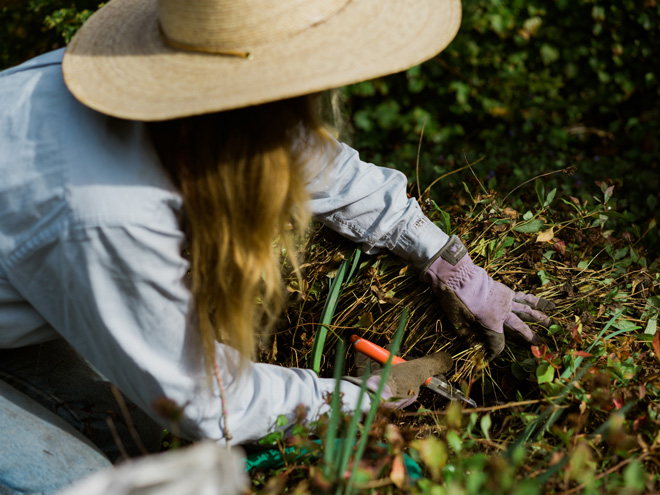
Contributor
- Topics: Archive, Inspired Gardens and Design
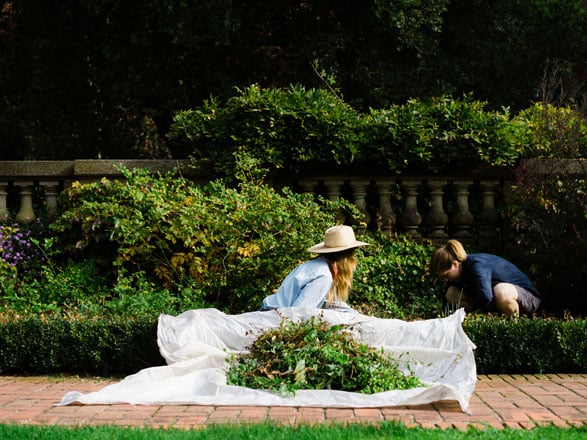
The following conversation took place last fall when the author chatted with a fellow professional gardener as they worked side by side in a garden at Filoli.
I walk through the Sunken Garden at Filoli, a below grade garden room with annual beds bordered by small boxwood hedges and red brick paths surrounding a rectangular reflecting pool. I am looking for Hallie Schmidt, the lead horticulturist in this section of the garden. It’s an unseasonably warm morning in early November 2016, and the garden is bustling with activity—volunteers huddle in groups of two and three chatting and weeding—despite the garden being closed for the winter season.
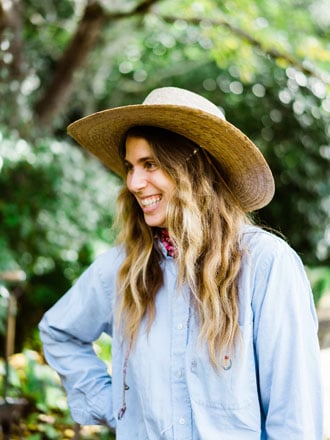
Hallie is nearly hidden between two sprawling ‘Graham Thomas’ roses. We move to a quiet spot in the garden to work together and talk. Hallie has set us up with pruners and a tarp to capture debris we create as we cut plumbago (Ceratostigma plumbaginoides) to the ground. The task is not totally rote; as we take care not to cut the emerging daffodil leaves that intermingle with the fading foliage. After a minute or so of silent work, we discuss Hallie’s typical workday. She begins each day by setting up projects for interns and volunteers before surveying her section to see if anything has happened overnight. There is always routine work to be done—blowing paths, weeding beds, and cutting lawns once a week.
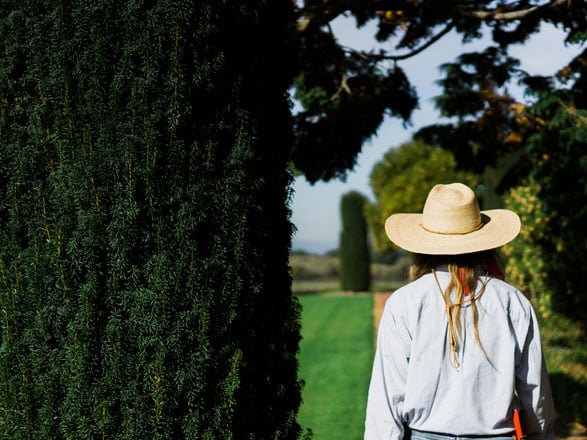
The rest of Hallie’s time is spent on big projects that may take weeks to complete, like planting out annuals twice a year or shearing the 65 Taxus baccata ‘Fastigiata’ every spring. When we meet, Hallie is about halfway through planting annuals for the coming spring display in the Sunken Garden, a task that gives her a special sense of accomplishment.
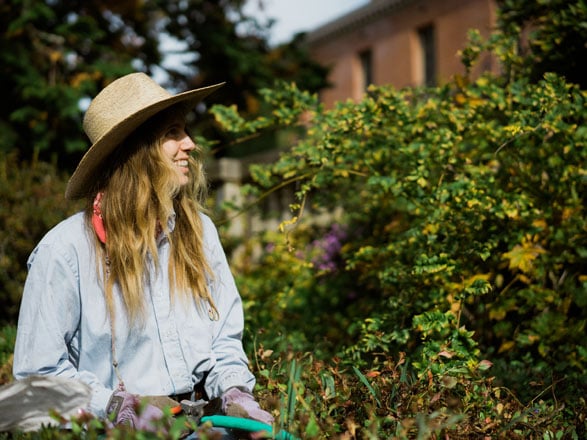
I ask her to take me through her planting plan, an elaborate process that she usually completes with a team of six gardeners. They begin by ripping out the plants from the previous season’s display. They root prune the boxwood hedge, and then work the bed’s soil. They fork and fluff the soil and mix in organic amendments and compost. Hallie then drives bamboo stakes at even intervals so plants can be placed in perfectly straight lines, and string is run between the stakes. The gardeners stand on boards to reduce soil compaction as one person makes a hole and the other places a plant. Bulbs are planted first; annual starts that are propagated in-house follow. As the season progresses, the beds are kept watered, fertilized, and weeded.
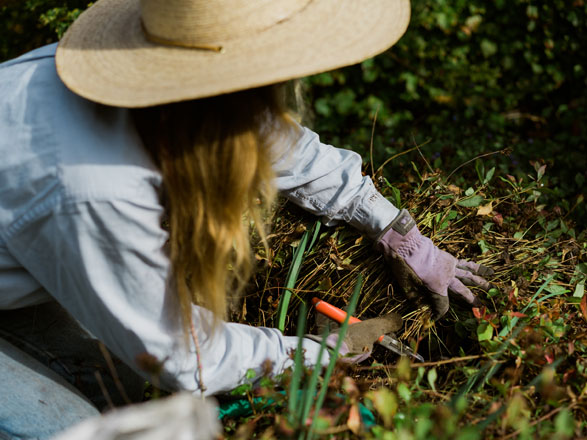
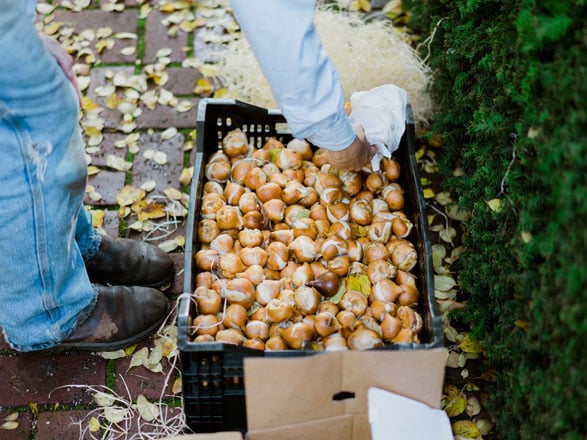
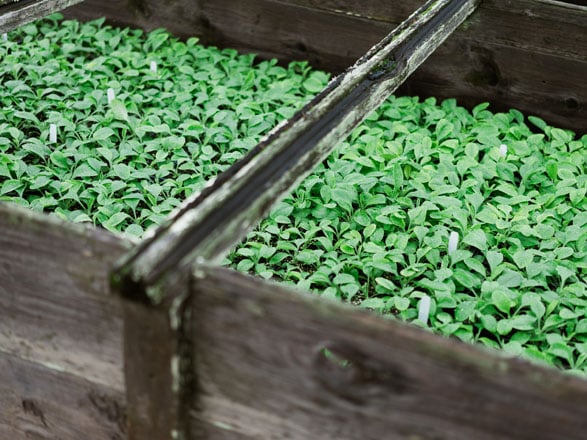
Hallie reflects on the gardening experience, rather than the work itself. When asked to describe her gardening happy place, she replies, “Right now, what we’re doing. Most people will walk past this bed and see it from however tall they are. But we’re on our hands and knees looking underneath all of the plants. I love uncovering little critters under here in the shady, wet areas. When you get to see the garden from something else’s perspective, it makes me really happy.”
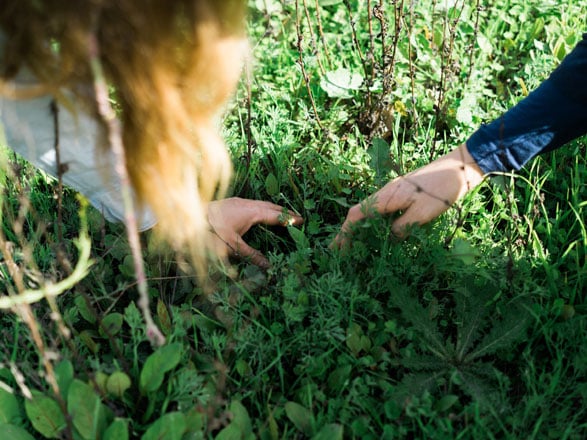
We stow our pruners and take a walk through the North Field, Filoli’s wildest spot. Every day Hallie looks forward to mornings in the garden—for the quiet, for the low light angles and sunrises this time of year, and for the animals that gather in the North Field and just beyond it outside the garden fence. Earlier, when I asked her about a perfect garden moment, Hallie described looking out over the field early one morning to see deer, turkeys, a blue heron, and two coyotes all gathered within easy view.
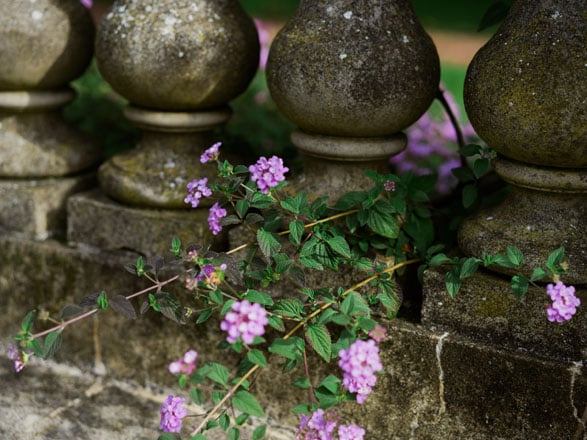
Hallie shows me one last thing before I go. Some time ago, on a whim, she’d strung a strand of Chilean bellflower (Lapageria rosea) through a branch in a maple tree to bring it closer to the pathway. The strand, now set with several pendulous candy-like flowers, reminds me of something Hallie said earlier in the day about gardening: “the act of what we’re doing necessitates patience.” As gardeners, the result of our work is often delayed and can surprise us.
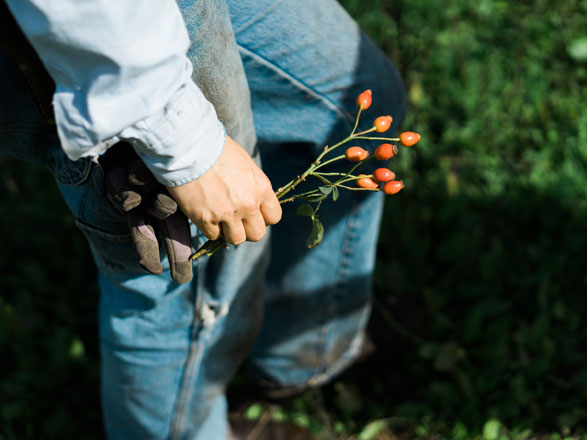
Filoli is a historically maintained early 20th-century country estate turned public house and garden in Woodside, California. It is open to the public Tuesday through Sunday, from February through October. For more information visit www.filoli.org.
Share:
Social Media
Garden Futurist Podcast
Most Popular
Videos
Topics
Related Posts

Low Maintenance Gardens – Better for Pollinators and People
Autumn 2022 “I come out every day. It’s therapy, my meditation.” Janet’s young garden transformed from overgrown, invasive plants to mostly natives. The dailiness of

Calochortophilia: A Californian’s Love Affair with a Genus
Summer 2022 I can chart the progression of my life by Calochortus. For the last two decades, at least. As a teenage girl growing up

Pacific Plant People: Carol Bornstein
Spring 2022 Public gardens play a key role in demonstrating naturalistic planting design, selecting native and adapted plants for habitat, and testing techniques for reducing

Add Year-Round Interest and Winter Blooms for Pollinators
Spring 2022 This article was created from an Interview by Merrill Jensen with Neil Bell in the Summer of 2021 for our Pacific Plant People






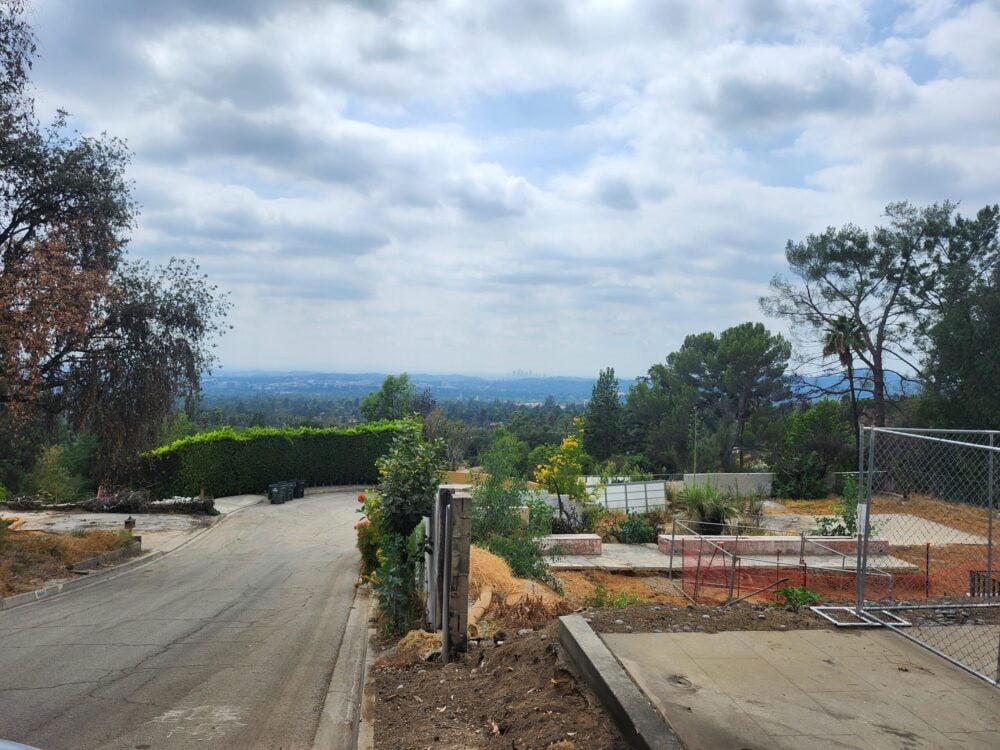
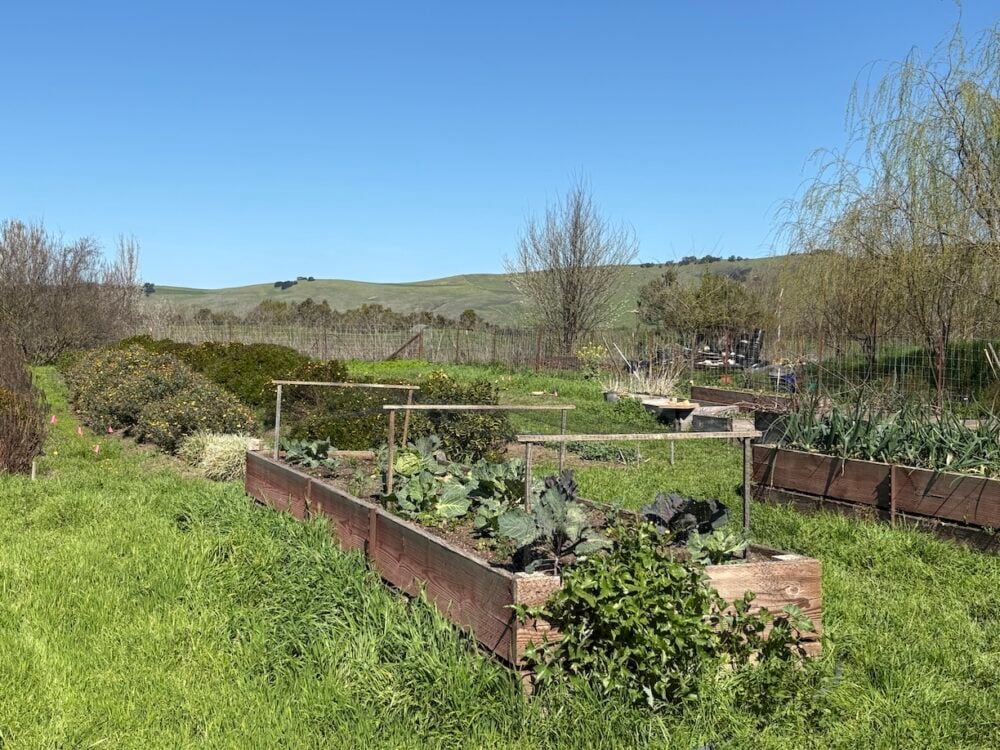
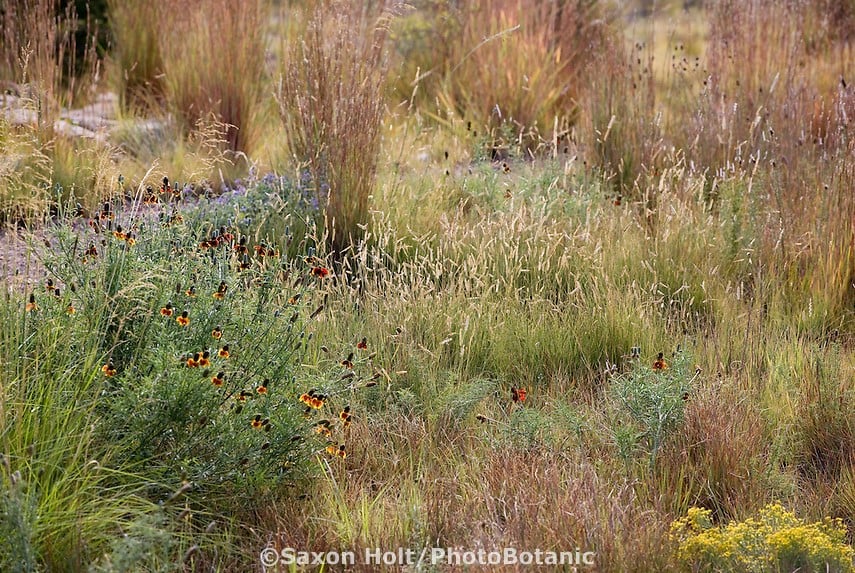



Responses